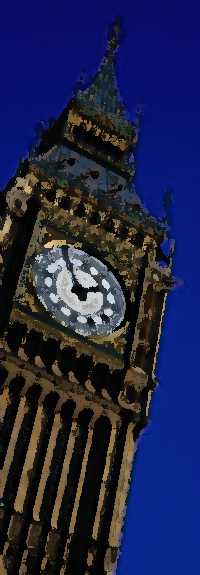Works Cited: Electronic Sources
The MLA Style Manual
provides some examples of electronic source citations in chapter six; however, the MLA Handbook for Writers of Research
Papers covers a wider variety of electronic sources in chapter six. If your particular source is not covered here, use
the basic forms to determine the correct format, consult the MLA Handbook, talk to your instructor, email the OWL tutors, or call the Purdue Writing Lab (765-494-3723) for help.
Some Tips on Handling Electronic Sources
It is always
a good idea to maintain personal copies of electronic information, when possible. It is good practice to print or save Web
pages or, better, using a program like Adobe Acrobat, to keep your own copies for future reference. Most Web browsers will
include URL/electronic address information when you print, which makes later reference easy. Also learn to use the Bookmark
function in your Web browser.
Special Warning for Researchers Writing/Publishing Electronically
MLA style requires
electronic addresses to be listed between carets (<, >). This is a dangerous practice for anyone writing or publishing
electronically, as carets are also used to set off HTML, XHTML, XML and other markup language tags (e.g., HTML's paragraph
tag, <p>). When writing in electronic formats, be sure to properly encode your carets.
Basic Style for Citations of Electronic Sources
Here are some
common features you should try and find before citing electronic sources in MLA style. Always include as much information
as is available/applicable:
- Author
and/or editor names
- Name
of the database, or title of project, book, article
- Any
version numbers available
- Date
of version, revision, or posting
- Publisher
information
- Date
you accessed the material
- Electronic
address, printed between carets (<, >).
Web Sources
Web sites (in
MLA style, the "W" in Web is capitalized, and "Web site" or "Web sites" are written as two words) and Web pages are arguably
the most commonly cited form of electronic resource today. Below are a variety of Web sites and pages you might need to cite.
An Entire Web Site
Basic format:
Name of Site. Date of Posting/Revision. Name of institution/organization
affiliated with the site (sometimes found in copyright statements). Date you accessed the site <electronic address>.
It is necessary
to list your date of access because web postings are often updated, and information available on one date may no longer be
available later. Be sure to include the complete address for the site. Here are some examples:
The Purdue OWL Family of Sites. 26 Aug. 2005. The
Writing Lab and OWL at Purdue and Purdue University.
23 April 2006 <http://owl.english.purdue.edu/>.
Felluga, Dino. Guide
to Literary and Critical Theory. 28 Nov. 2003. Purdue
University. 10 May 2006 <http://www.cla.purdue.edu/english/theory/>.
Information above is courtesy
of the OWL website – Online Writing Laboratory of Purdue University. See
my citation listed below.
The Purdue OWL Family of Sites. 26 Aug. 2005. The
Writing Lab and OWL at Purdue and Purdue University.
2 April 2007 <http://owl.english.purdue.edu/owl/resource/557/09/>.
